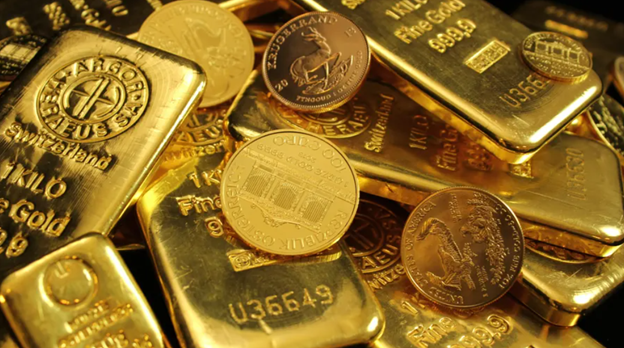Gold prices soared to a historic high for the second consecutive day on Monday, reaching a staggering $2,100 per ounce as the global rush for bullion shows no signs of abating. Analysts predict that this upward trajectory is poised to continue, with expectations of gold prices remaining above the $2,000 mark well into the next year.
The recent surge in gold prices is attributed to a combination of factors, including geopolitical uncertainty, a potential weakening of the U.S. dollar, and the prospect of interest rate cuts. The ongoing Israel-Palestinian conflict has intensified demand for the precious metal, traditionally considered a safe-haven asset during times of economic and geopolitical turmoil.
Market experts anticipate that gold prices could experience further growth in 2024, with projections reaching up to $2,200 by the end of the year. Nicky Shiels, head of metals strategy at MKS PAMP, emphasized the differences in the current gold market compared to 2011, stating, “There is simply less leverage this time around…taking prices through $2,100 and putting $2,200/oz in view.”
As of the latest update, spot gold prices hit a record high of $2,110.8 per ounce on Monday, subsequently settling at $2,084.59. This follows the previous record set on Friday when gold touched $2,075.09, surpassing the intraday record high of $2,072.5 on August 7, 2020, according to LSEG data.
Bart Melek, Head of Commodity Strategies at TD Securities, predicts an average gold price of $2,100 in the second quarter of 2024. Central bank purchases are identified as a key catalyst for this bullish outlook, with 24% of surveyed central banks expressing intentions to increase their gold reserves in the next 12 months.
The World Gold Council’s recent survey highlights a growing pessimism among central banks about the U.S. dollar as a reserve asset, potentially leading to higher demand for gold from the official sector in the coming years.
Furthermore, a potential policy pivot by the U.S. Federal Reserve in 2024 may contribute to the positive trend. Analysts speculate that lower interest rates could weaken the dollar, making gold more attractive to international buyers.
In response to recent statements from Fed officials, including Governor Christopher Waller and Chairman Jerome Powell, experts foresee a potential easing of policy and a halt to interest rate hikes, factors that could buoy gold prices in the coming year.
In conclusion, experts agree that the main drivers supporting gold in 2024 will likely be interest rate cuts by the U.S. Federal Reserve, a weaker U.S. dollar, and sustained geopolitical tensions on the global stage, according to BMI, a Fitch Solutions research unit.
(Source: Lee Ying Shan | CNBC)









